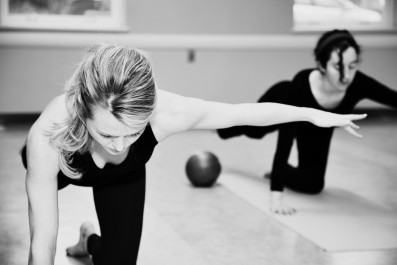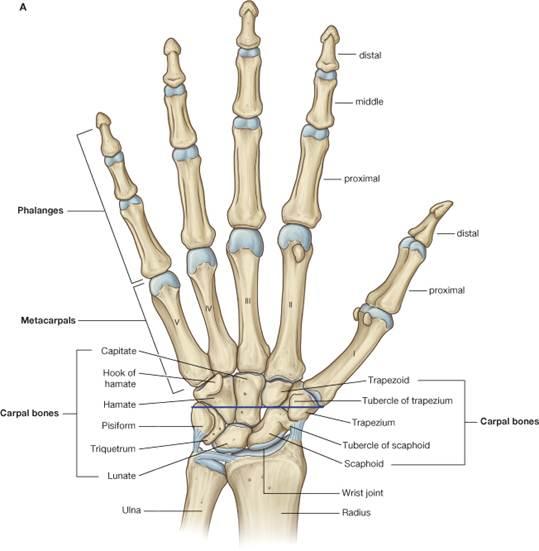If there is one issue that students consistently mention class, it’s wrist discomfort. By nature, our wrists are particularly prone to injury. Holding plank on your elbows instead of your palms tends to be the go-to modification to avoid the pain, however, many positions (eg. Downward-Dog Pose, Bird-Dog, Knee Hovers ) cannot be done correctly from the forearms. Making a fist and holding positions from your knuckles is also an ineffective solution.
Besides, avoiding the exercises that trigger the pain doesn’t solve the issue, and you’ll be constantly modifying and hindering the development of your practice!
The solution? Learn how to protect your wrists during exercise. And, maybe don’t text and type so much – but that’s another carpal tunnel story!
I’ve been teaching Pilates workshops and classes for the past decade to instructors and students alike. They almost always admit to experiencing wrist pain at some point. When you explore the wrist anatomy, it’s easy to see how these vulnerable structures might suffer from improper weight transfer and repetitive movement.
Wrist Anatomy
Your wrists have a lot of moving parts. They start where your two forearm bones, the radius and ulna, meet with three of the eight carpal bones on each hand. An array of ligaments connect the many bones, and muscles and tendons lie above and below the bones to move the wrist and fingers.
With all this complexity, misalignments in bones, ligaments, and muscles
during weight-bearing poses are very common, which can trigger wrist pain and two conditions in particular. The first, called ulno-carpal abutment syndrome, indicates pressure where the ulna meets the carpal bones on the little-finger side of the wrist. This may occur if the ulna bone has an unusual shape—something just a small percentage of us are born with—or if the wrist is repeatedly turned outwards to the baby
finger in weight-bearing poses like
Downward-Facing Dog.
The second syndrome, tendonitis, is characterized by tendon inflammation, often due to misalignment and weight transfer in poses such as Chaturanga
(push ups for the Pilates folks!), where the wrist joint is in
full extension. Chronic wrist injury is also common in yogis and dancers with hyper-mobile ligaments, which can cause inflammation, pain, and ultimately arthritis.
The key to protecting your wrists is—surprise!—a strong core and shoulder girdle (you knew this was coming folks). Evidence shows that a strong core can increase the efficiency of the rotator cuff muscles (we cue “squeeze your arm pits” during plank and pushup all the time in class for this reason). These muscles stabilize the shoulders and decrease the load that is transferred to your wrists. On the flip side, low core strength or failure to engage the core/shoulder girdle can lead to decreased trunk
and shoulder stability. If the core is weak, strong shear forces transfer across the wrist, especially during transitions. Picture the ubiquitous Down Dog-Plank-Pushup sequence. Each time you repeat it, your wrists bear weight throughout. Over time and without proper support, this can lead to the injuries described above. But when effort is well dispersed throughout the core and shoulders in practice, that force in the wrists is minimized.
So, the moral of the story? Don’t simply avoid what hurts and chalk it up to “weak wrists”. Look at the bigger picture. Look at your alignment. Look at how you can support your wrists by strengthening your core, shoulder girdle and rotator cuff muscles.

Here’s to you and your practice! See you on the mat.
